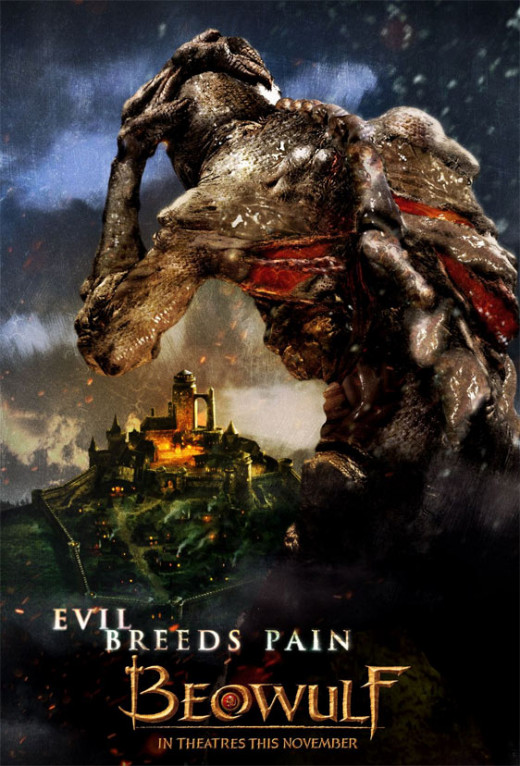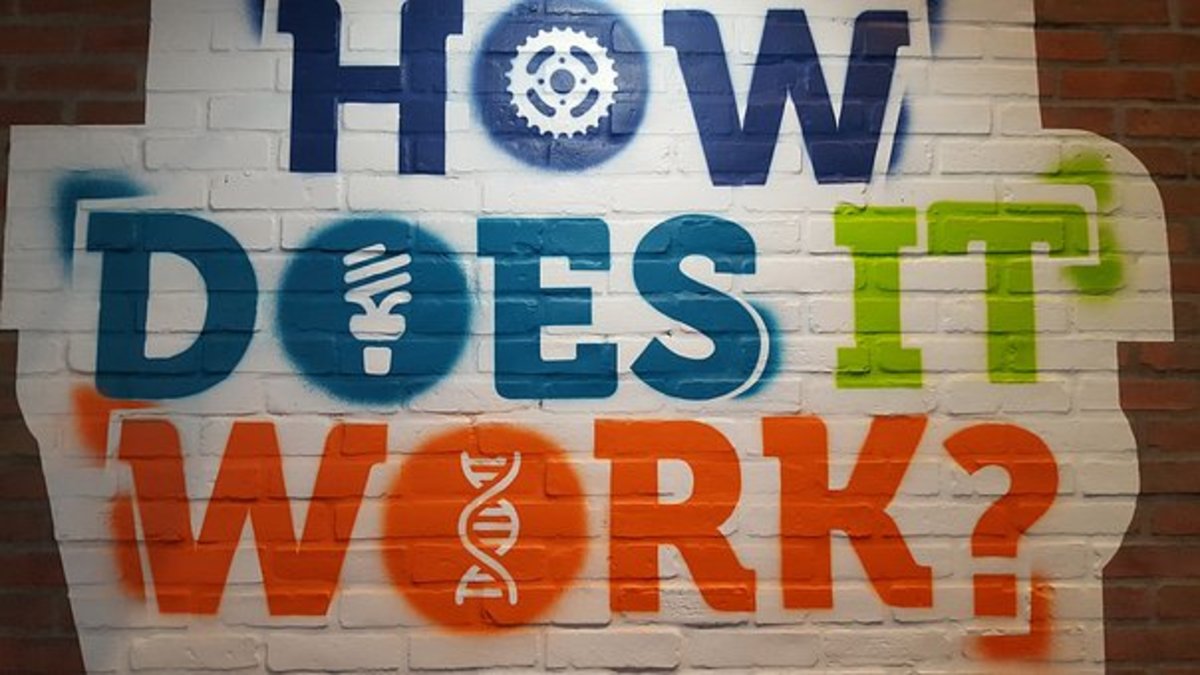Seeing the Relevance in Beowulf (Common Core features)

Teaching with a Purpose
Let it be said that I don't claim to be an expert teacher, if such a thing is even possible. However, as an English teacher, do claim that everything that is taught in the classroom should be useful and relevant to the students' lives. It doesn't matter how well-designed and interactive your lesson is, you're wasting your time if the students don't see how the information can be used.
Therefore, it's always necessary to teach with a purpose. If you're going to teach Beowulf, what are the students going to take away from it? Can an exploration of that epic help the students later on after graduation? What will they be able to take away from the poem? Ultimately, are you teaching them something academic--something that's not practical at all--or something educational--something that can be put to use?
The rest of this page--based on what I did in my classroom-- is dedicated to highlighting the relevance in Beowulf and building bridges of connection between school and student.
Common Core Anchor Standards(for Reading) to be Covered
- Read closely to determine what the text says explicitly and to make logical inferences from it; cite specific textual evidence when writing or speaking to support conclusions drawn from the text.
- Determine central ideas or themes of a text and analyze their development; summarize the key supporting details and ideas.
- Analyze how and why individuals, events, and ideas develop and interact over the course of a text.
- Interpret words and phrases as they are used in a text, including determining technical, connotative, and figurative meanings, and analyze how specific word choices shape meaning or tone.
- Assess how point of view or purpose shapes the content and style of a text.
- Integrate and evaluate content presented in diverse formats and media, including visually and quantitatively, as well as in words
- Analyze how two or more texts address similar themes or topics in order to build knowledge or to compare the approaches the authors take.
- Read and comprehend complex literary and informational texts independently and proficiently
The Start: Basic Summary
In the past, I assigned the students to read the textbook's excerpt of Beowulf for homework. When introducing the reading assignment, I find it necessary to guide the students through reading with pencil in hand so that they can get accustomed to writing down brief summaries and/or questions while they read.
On the first discussion day, I once tried a different, more engaging way of summarizing the plot before diving into it. I divided the class into groups and assigned each group to a particular section of the poem. The task was to create a 30-sec. re-enactment of their section, which required them not only to agree on the most important parts of the section but also to understand and be able to explain why the parts were more essential than the rest. This student-centered activity also provides me with insight into what the students understand and don't understand. Finally, with props from my prop box, each group re-enacted their section, building a summary of the reading as the demonstrations progressed.
Thought-Provoking Exit Slip Questions
- Was Grendel's mother a villain? Why?
- Compare Grendel with his mother.
- Which character do you sympathize with more: Grendel or the Grinch? Why?
Why do you teach the texts that you teach?

Next Step: Character Analysis
After ensuring that the students understand the plot, I then shift into their analysis of characters. Again, this is more student-centered. In a whole-class setting, they pick a character, volunteer a characteristic, and I require them to find proof of that characteristic in the text.
During the students' analysis of Grendel, I bring out that there is a lot of damning evidence that depicts Grendel as nothing but a blood-thirsty monster. Here, I direct them to the beginning of the text where the character is introduced. Reading the previous stanza and the stanza of Grendel's introduction, the students will be able to notice that he is certainly depicted as a disturber of peace, as a being that is destined to be evil. However, I make sure to highlight the fact that we as readers are not allowed to conclude this ourselves; instead, the author tells us what we should be thinking and how we should view Grendel. We then search for various references to Grendel throughout the text, and the students discover that each one is dark and "sin-stained."
Why so much focus on Grendel's characterization? Because what is emphasized is the role that words play in our view of people and the world. Point of view controls the language we use, and because of that, our language can be biased.
Case in point: Take Grendel's mother. After her son dies, she visits Heorot and kills as well. Is she a villainous monster? The author paints it as such. However, her act is one of vengeance and one that is closer to what is expected under the Comitatus Code--a code that Hrothgar, Beowulf, and their men would have sworn allegiance to. According to the code, if a family/tribe member is slain, one has the right to avenge the death by either killing the murderer or forcing the murderer to pay a certain amount of money for the death. Despite this, from the author/narrator's perspective, Grendel's mother is a soulless monster like her son.
Moreover, to illustrate how point of view controls interpretation, I very briefly allude to 2007 Beowulf movie. In this film, Grendel is portrayed as a tortured soul with a very sensitive ear. Because of his sensitivity to the boisterous celebration at Heorot, he attacks. Providing Grendel with this infirmity works to humanize him, a goal that I think the director was aiming for. Nevertheless, to make a long explanation short, I let the students realize that sometimes our perceptions of people and events are distorted by others' negative words/depictions. The longer this perception goes unchecked or unquestioned, the more we take it for the truth--which can be dangerous. Essentially, it's what Chimamanda Adichie calls the "the danger of a single story."
Capturing the Infirmity in Grendel
Further points of discussion
- Examine the theme of "good vs. evil." (Who's good? Who's evil? How do you know? How do you even define "good" and "evil"?)
- Examine the presence of Paganism and Christianity in the text. (Are they treated the same? What could be the advantage of blending two religions into one text?)


Connecting to the Grinch
Following a thorough discussion of the poem and its characters, I then tell the students that they are going to interact with another text and compare/contrast its villain with Grendel. You can imagine their surprise when up on the television screen they see the opening to the cartoon "How the Grinch Stole Christmas."
The similarities between the two characters are incredible--even down to the words/phrases that describe the two. To be brief, both are monster-like outsiders who live within the sound range of a joyous area. Both loathe the sound of celebration. Both sneak down to wreak havoc in this happy place. Both are defeated by an unexpected response in said happy place.
After the students experience nostalgia, we regroup and recap the similarities and differences. Then, together we compose compare/contrast paragraphs about the two characters. As I simply write what the students tell me, I remind them that they always need to be able to cite evidence to support their statements, which then causes them to give me specific quotes from the two texts.
Spot the similarities in this song
Mass Shooting Statistics
- July 22, 2011: At least 80 people are killed at a summer camp on the Norwegian island of Utoya. A man arrested also is suspected in a blast earlier the same day in downtown Oslo that killed seven.
- Sept. 23, 2008: Matti Saari, 22, walks into a vocational college in Kauhajoki, Finland, and opens fire, killing 10 people and burning their bodies with firebombs before shooting himself fatally in the head.
- Nov. 7, 2007: After revealing plans for his attack in YouTube postings, 18-year-old Pekka-Eric Auvinen fires kills eight people at his high school in Tuusula, Finland.
- April 16, 2007: Seung-Hui Cho, 23, kills 32 people and himself on Virginia Tech campus in Blacksburg, Va.
Connecting to the real world
The next day, after the light-hearted discussion of cartoons, I darken the mood by having the students silently read a list of mass shooting statistics--mostly taking place in schools. When asked the purpose of such heavy information, the students eventually connect the dots: these are the modern-day Grendels terrorizing the places of safety and celebration. A few also note that one or two of these Grendels were identified as outsiders.
These are the questions that I then ask them: Where are the Beowulfs (-ves)? In the poem, it took twelve years of terror for Beowulf to arrive, how long will it take for him to arrive now? Or has he already appeared?
I ask these questions not really expecting an answer but to provoke thought. After this, I hand out a fairly recent article on a particular school shooting and explain that the students will--individually or in pairs--prepare a compare/contrast composition between this article and anything in Beowulf. They don't have to focus on Grendel and the shooter if they wish not to. They can focus on the people's response to the acts of violence, the role of the hero, the role of the leader, etc. Whatever they choose to discuss, they must support their claims with cited evidence from the texts--just as we did together in our Grendel vs. Grinch composition.
To end on a lighter note
Lastly, to avoid concluding our discussion on a dismal thought, our final two activities with Beowulf revolve around creating a resumé. Essentially, after I provide pointers for writing a strong, effective resumé--i.e., strong verbs, parallel structure, neatness, etc.--, the students' job is to compose one for Beowulf to help him get the job of the King of the Geats. (This is not my original idea; I don't claim to take credit for such a marvelously ingenious assignment.) In order to build up the resumé, the students draw from textual evidence and fill in the rest with their imagination.
When all resumés are complete, I take one or two volunteers and give them a mock interview to see whether the students are familiar with interview etiquette. As a class, we discuss the do's and don'ts for interviews. Finally, we conclude our unit on the Anglo-Saxon period/Beowulf with the creation of the students' own resumés--either present-day or projected ones--and mock interviews with the career center instructor.

Be a bridge builder
Author Ralph Ellison once said, "Education is all a matter of building bridges." When you go into the classroom each day, you have a decision to make: whether to be a gap sustainer or a bridge builder. Standards will come and go, but the essence of education will remain in all of them: giving the students tools to use later on in their lives. Find ways to connect the school culture to the student culture. Hopefully, these Beowulf activities have helped you or inspired you to build bridges of relevance with other texts.

For further investigation
- Chimamanda Ngozi Adichie: The danger of a single story | Talk Video | TED.com
Author Chimamanda Adichie discusses the "danger of a single story" and how words can do damage upon one's perception.









